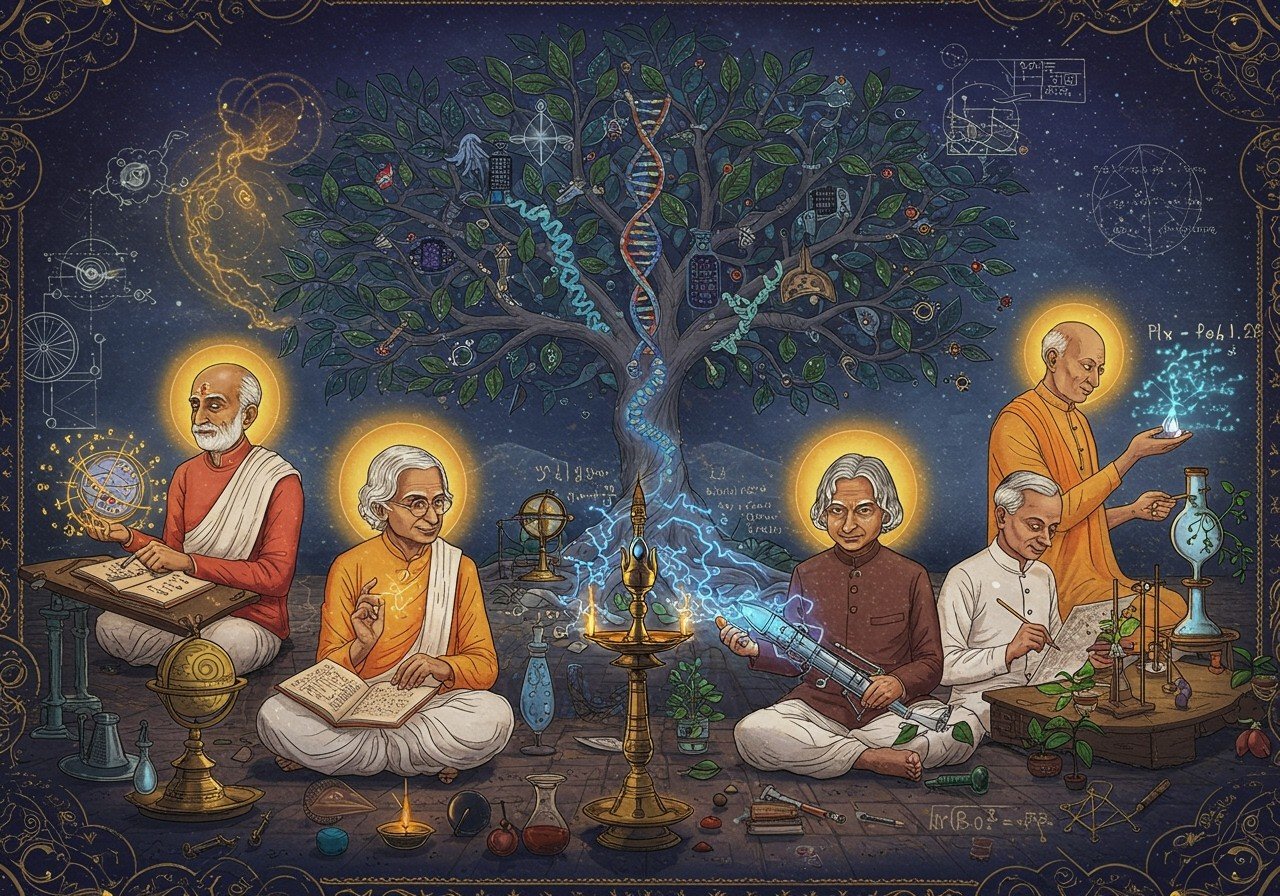
Embark on a captivating exploration of India’s scientific and technological heritage, a narrative woven with the brilliance of countless innovators who have shaped the nation’s trajectory. From ancient discoveries to contemporary breakthroughs, this journey unveils the rich tapestry of India’s scientific endeavors, contextualized within their cultural and historical backdrop. Delve into the significance of preserving this invaluable legacy for generations to come.
Ancient Luminaries of Indian Science
Indian science boasts profound roots, nurtured by early pioneers whose contributions resonate through time. Aryabhata, a luminary astronomer-physicist, stands tall with his astronomical treatises and mathematical acumen. Sushruta, revered as the father of surgery, penned the Sushruta Samhita, a cornerstone of surgical techniques. Charaka, a trailblazer in Ayurveda, composed medical texts that remain relevant even today.
Bhaskara I propelled mathematics forward, particularly in algebra and trigonometry, while Brahmagupta’s work on zero and negative numbers stands as a testament to his genius. These figures form the bedrock of India’s scientific legacy, inspiring countless generations to follow in their footsteps.
Medieval and Colonial Era Contributors
India’s scientific odyssey continued through the medieval and colonial periods, marked by remarkable contributions. Madhava of Sangamagrama, centuries before European advancements, laid the groundwork for calculus within the Kerala school of mathematics. Nilakantha Somayaji enriched the scientific tapestry with his profound astronomical knowledge.
Ramanuja’s philosophical insights influenced modern logic and mathematics, bridging traditional thought with emerging scientific concepts. J.C. Bose, a polymath of exceptional caliber, made pioneering strides in radio waves and plant biology, demonstrating India’s scientific prowess despite colonial constraints.
C.V. Raman’s discovery of the Raman Effect, a pivotal moment in the study of light scattering, earned him the Nobel Prize in 1930, placing India firmly on the global scientific map. His work continues to inspire researchers worldwide.
Discover how Hinduism’s global reach fostered cross-cultural scientific exchanges.
Post-Independence Visionaries
Post-independence India witnessed a surge of innovation, led by visionaries who shaped the nation’s scientific destiny. Homi J. Bhabha spearheaded the Indian nuclear program, making substantial contributions to theoretical physics. Vikram Sarabhai, the father of the Indian space program, founded ISRO, setting the stage for India’s foray into space exploration.
M.S. Swaminathan revolutionized agriculture with the Green Revolution, introducing high-yielding crops and ensuring food security for millions. A.P.J. Abdul Kalam, the Missile Man, propelled India’s defense capabilities with his advancements in missile technology.
Verghese Kurien’s White Revolution transformed India into the world’s largest milk producer, demonstrating the power of innovation in addressing societal needs. His contributions to dairy farming continue to impact livelihoods across the nation.
Contemporary Trailblazers and Emerging Leaders
In recent times, figures like Gagandeep Kang have made significant strides in microbiology and vaccine development, notably for rotavirus. Under K. Radhakrishnan’s leadership, ISRO achieved a remarkable feat with the Mars Orbiter Mission, marking India’s foray into interplanetary exploration. Explore the rich history of spiritual traditions alongside India’s scientific journey here.
Tessy Thomas, the ‘Missile Woman of India,’ has played a pivotal role in advancing defense technology. Manjul Bhargava’s contributions to number theory earned him the Fields Medal, a prestigious recognition in the world of mathematics.
Raghunath Mashelkar’s expertise in polymer science has profoundly influenced innovation policy, nurturing a vibrant culture of research and development within India.
Pillars of Indian Science and Technology: Premier Institutions
India’s scientific achievements are underpinned by esteemed institutions that serve as hubs of research and innovation. The Indian Institutes of Technology (IITs) play a crucial role in fostering cutting-edge advancements. The Indian Space Research Organisation (ISRO) continues to push the boundaries of space exploration and satellite technology. Shop for traditional Tulsi malas at Poojn.in.
The Council of Scientific and Industrial Research (CSIR) contributes significantly across diverse fields, from chemistry to biotechnology. The Bhabha Atomic Research Centre (BARC) remains at the forefront of nuclear science and energy research. The Indian Council of Medical Research (ICMR) plays a vital role in public health and disease prevention.
Celebrating Excellence: Awards and Recognition in Indian Science
India recognizes and celebrates its scientific luminaries with prestigious awards. The Shanti Swarup Bhatnagar Prize acknowledges outstanding research contributions across various disciplines. The Padma Awards honor individuals who have made significant contributions to science and technology.
The Ramon Magsaysay Award, often hailed as Asia’s Nobel Prize, recognizes the achievements of Indian scientists on a global platform. International accolades, such as the Nobel Prize, elevate Indian scientists to the world stage, celebrating their profound impact on knowledge and innovation. Find exquisite brass Lakshmi idols at Poojn.in to honor the goddess of prosperity and knowledge.
Poojn.in: Connecting You to India’s Scientific Heritage
At Poojn.in, we provide you with authentic puja items and ritual materials, enabling you to honor India’s scientific legacy. Pay homage to these great minds with our curated selection:
- Pure copper and brass aarti thalis: Ideal for expressing reverence and gratitude to inspirational figures.
- Traditional diya sets: Crafted from earthen clay and metal, perfect for illuminating ceremonies and creating a sacred ambiance.
- High-quality incense sticks and dhoop: Enhance the spiritual atmosphere during meditation or prayer, fostering a deeper connection with India’s scientific heritage.
- Fresh flower garlands and petals: Offer a fragrant tribute of respect (available in select cities).
- Pure ghee and wicks: Essential for lamp lighting ceremonies, symbolizing the pursuit of knowledge and enlightenment.
- Sandalwood and kumkum: Used for tilak application during prayers, honoring tradition and seeking blessings.
Discover our elegant crystal diyas.
Our meticulously curated collection ensures access to genuine ritual items, maintaining the sanctity of your spiritual practices. We deliver across India, bringing tradition to your doorstep. Visit www.poojn.in or contact [email protected].
A Legacy of Innovation: Celebrating the Past, Embracing the Future
India’s scientific and technological journey stands as a testament to its rich heritage and forward-thinking spirit. From ancient scholars to modern pioneers, India’s contributions have left an indelible mark on the world. As we celebrate these remarkable figures, we honor the past while embracing the future, ensuring that India’s legacy of innovation continues to inspire generations to come.
Explore the intersection of science and spirituality in Hindu tradition.
FAQs: Key Figures in Indian Science & Technology – A Historical Perspective
Who is considered the father of science and technology in India? Dr. Vikram Sarabhai is often hailed as the father of Indian science and technology, instrumental in establishing ISRO.
Who is the current Minister of Science and Technology in India? This position varies with government terms. Consult official sources for the most up-to-date information.
Learn about the ancient sage Valmiki and his contributions to Indian literature.
What is the highest science and technology award in India? The Shanti Swarup Bhatnagar Prize is among the most prestigious awards for scientific achievement in India, recognizing exceptional contributions across various scientific fields.
Explore the multifaceted character of Ravana, a scholar and antagonist in the Ramayana.
Which Indian scientist won the Nobel Prize for Physics? C.V. Raman received the Nobel Prize in Physics in 1930 for his groundbreaking work on the scattering of light, known as the Raman Effect.
Who is a famous Indian inventor in the field of mathematics? Srinivasa Ramanujan stands as a renowned Indian mathematician, celebrated for his profound contributions to mathematical analysis and number theory.
Discover the Ramayana’s influence on Indian art and literature.
What are some key contributions of Homi J. Bhabha? Homi J. Bhabha played a pivotal role in the development of India’s nuclear program and was the founding director of the Tata Institute of Fundamental Research.
Explore the profound impact of the Ramayana on Hindu spirituality.
Who is a notable female Indian scientist in history? Dr. Asima Chatterjee, renowned for her research in organic chemistry, is a distinguished female scientist in Indian history. Dr. A.P.J. Abdul Kalam primarily contributed to aeronautical development.

